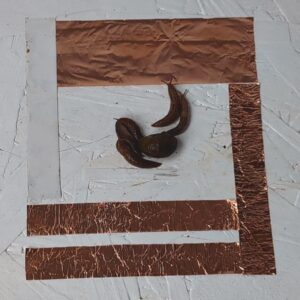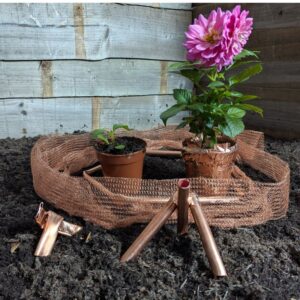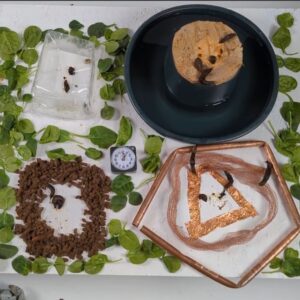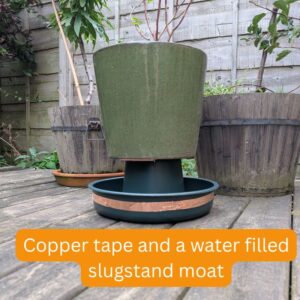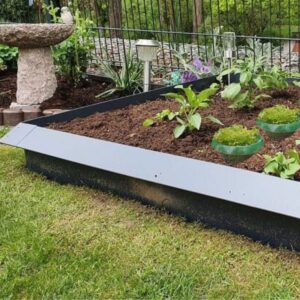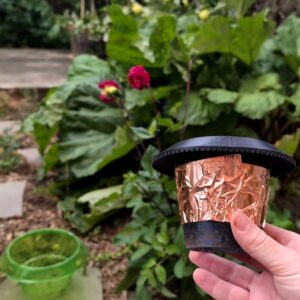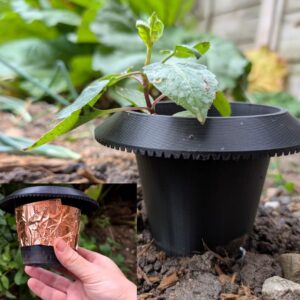Using copper tape to the fullest and avoiding the biggest mistakes
I’m going to run through what kind of copper tape you should buy and also how to use it to stop slugs. The most common mistake I see is that people buy any old copper tape, stick it halfway up their containers, and just hope for the best—as shown below.
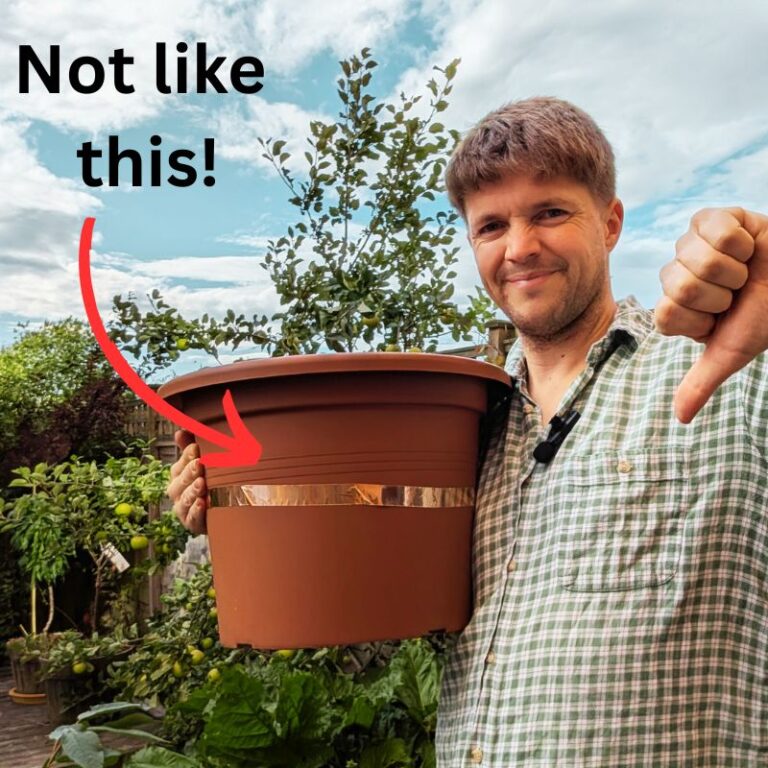
This will more often than not lead to disappointment. It might only keep slugs and snails away occasionally and won’t give you the level of protection you’re probably hoping for—especially if you’re growing vulnerable seedlings or slug and snail favorites like hostas or dahlias. But before i tell you how to use copper tape, you need to understand something…
How repellent is copper tape?
Copper tape doesn’t have a very strong repellent effect against slugs and snails, but it does have some effect. We’ve tested it a lot as you can see below and we’ve found that when combined with other methods, it can help protect your plants more effectively—allowing you to enjoy the gardening you love with less disappointment.But you need to use it correctly! If you’d like to understand how copper works as a repellent—and why we believe it isn’t highly effective—I’ve written a post and shared a video explaining my thoughts. I’ll share that here
our complete guide to stopping slugs
If you haven’t yet bought copper tape—or if you’re interested in more effective slug repellents—it’s worth checking out our complete guide to stopping slugs below. In it, we share the most effective barriers along with many other helpful tips. Just put your email adress in below and we’ll send you a copy!
What's the best type of copper tape to buy?
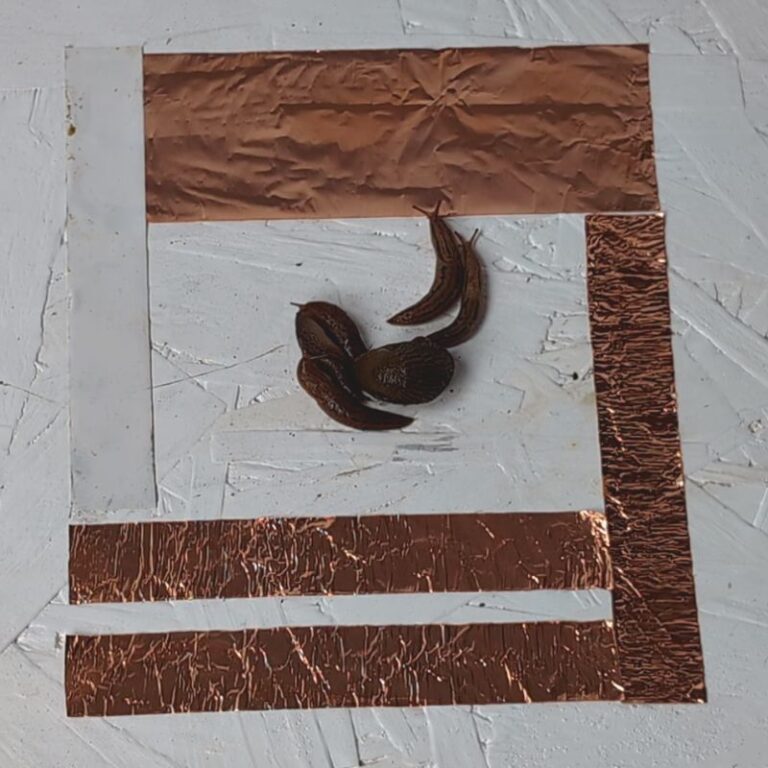
If you haven’t already bought copper tape, I recommend choosing the widest tape you can. If you only have narrow tape, use as many strips as is practical—the more coverage, the better. Think of it like a fence: a six-foot fence will deter most people, while a three-foot fence won’t stop many at all. Likewise, a single wide strip of copper tape is generally more effective than one narrow one. So to but simply a wide strip of copper tape is the best, and it doesn’t matter how you acheive this.
It’s important to know that copper tape on its own will never block 100% of slugs and snails, but using more tape makes it more effective. Some people suggest that two narrow strips work better than one wide strip, but in my own experiments, I didn’t find this to be true.
So what's the best way to use copper tape then?
The main benefit of copper tape is that it can easily be combined with more effective slug barriers, as shown below. Relying on copper tape alone is like studying for five minutes and expecting to ace an exam without reviewing your notes or practicing problems. It can be helpful, but don’t expect great results using it by itself.
Other benefits of copper tape are that it’s natural, long-lasting, and easy to set up, and I personally think it can often look quite attractive on pots and garden beds. It’s also inexpensive upfront, which makes it easy to try out. However, I wouldn’t call it amazing value for money, because while the cost is low, its effectiveness is relatively limited. Copper tape works best when combined with other slug and snail control methods, rather than relying on it alone. That said, its simplicity and natural composition make it a useful addition to a broader strategy, especially for gardeners looking for low-maintenance, chemical-free options. If you are looking for a broader strategy, make sure you grab a copy of our complete guide to stopping slugs above.
How not to use copper tape
Make sure there’s no way for slugs and snails to get around your copper tape. That means no gaps in the tape and nothing nearby that could act as a bridge over it. Avoid placing the copper tape at the very bottom of the container for the same reason—slugs and snails can often reach much farther than you think, easily bypassing it and making the barrier redundant.
In conclusion
Copper tape isn’t very effective. I have a complete guide to stopping slugs which shows you more effective barriers and dozens of other cheap and easy changes you can make to help keep your plants safe. Use copper tape with other barriers for example slugstands (which you can buy here), slug fences and slug collars.

